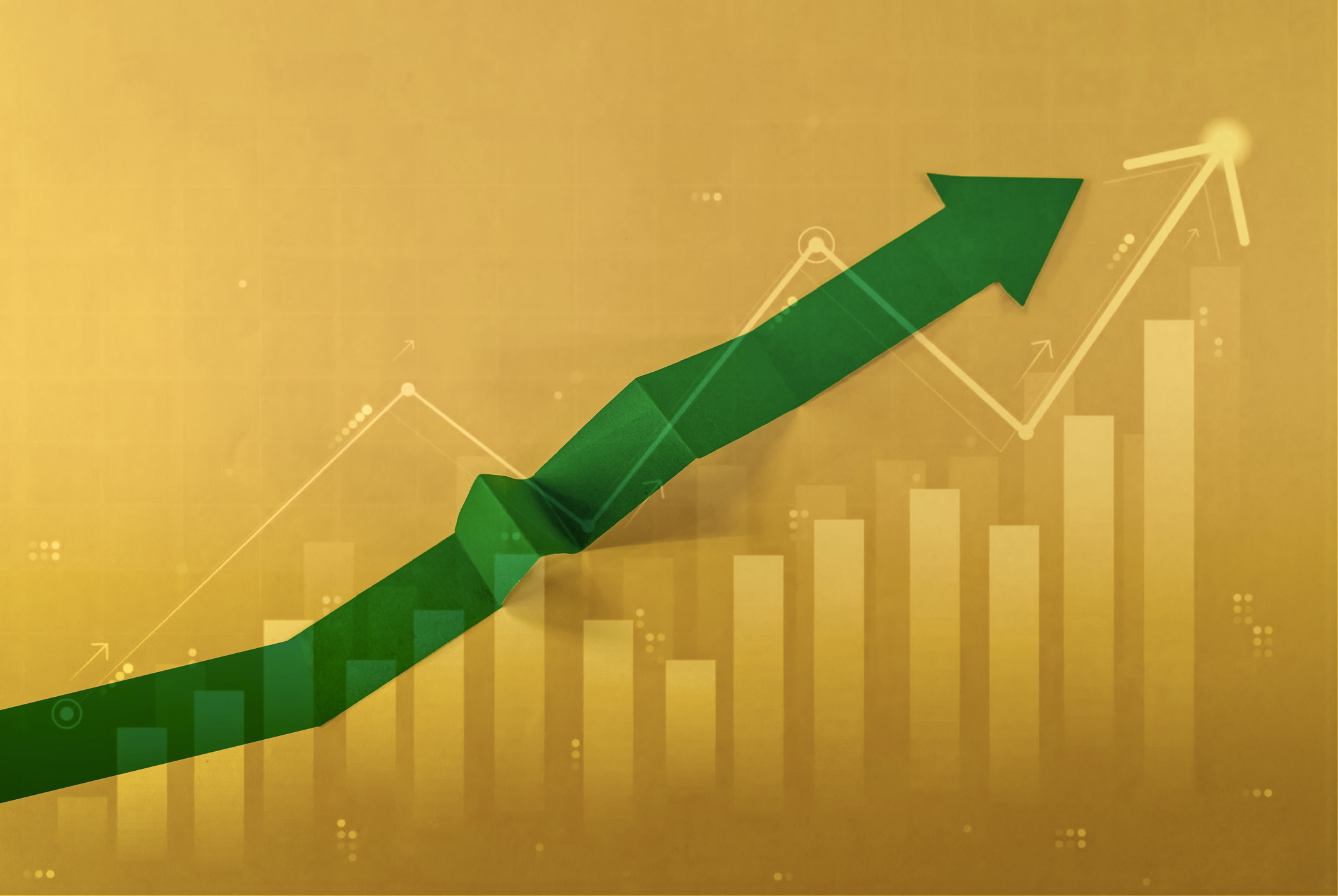What Is Common Stock?
Not many investors ever seriously address the simple question of what is common stock. You should, because it's important to know what you're buying.


It's a simple question – what is common stock? – but it's a good one. It's the first step in getting to know what you're buying in the stock market. And it's important that you as an investor know what you're buying.
Common stock is a type of security that gives you partial ownership in a corporation. As an owner of the corporation, you have certain rights and benefits.
These include a residual claim on future profits, the right to vote on important company matters such as electing board members and approving acquisitions, and receiving dividends from the company's cash flow from operations.
From just $107.88 $24.99 for Kiplinger Personal Finance
Become a smarter, better informed investor. Subscribe from just $107.88 $24.99, plus get up to 4 Special Issues

Sign up for Kiplinger’s Free Newsletters
Profit and prosper with the best of expert advice on investing, taxes, retirement, personal finance and more - straight to your e-mail.
Profit and prosper with the best of expert advice - straight to your e-mail.
Although the existence of common stock dates back to 2000 BCE with the Assyrian people in Mesopotamia (present-day Middle East), the modern record considers the common stock issued by the Dutch East India Corporation in 1602 to be the first example of an actual printed document indicating proof of ownership.
In 1611, the Amsterdam Stock Exchange was created, the world's first stock exchange.
Here in the U.S., the earliest example of an organized stock exchange was in 1792, when the Buttonwood Agreement was signed by 24 prominent stockbrokers and merchants of the day.
It would eventually become the New York Stock Exchange in March 1817. Today, there are more than 2,200 companies whose common stocks are traded on the NYSE.
How does common stock fit into a company's capital structure?
The two elements of a company's capital structure are debt obligations and total shareholders' equity. This is a company's invested capital, the funds used to finance its operations, purchase assets and grow.
A company's shareholders' equity consists of common and preferred stock and retained earnings. When combined with outstanding debt, you have the entire capital structure of a business, the invested capital.
The mix between debt and equity depends on several factors, including, but not limited to, a company's cost of capital, business strategy, future revenue estimates, investment requirements, bond rating, the valuation of its common stock and many more.
When companies grow quickly, they're more likely to hold higher debt levels on their balance sheet, comfortable knowing that they will generate significant future cash flow, thus enabling them to pay down the debt more quickly.
Companies growing more slowly will be less open to significantly leveraging their balance sheets, knowing cash flows will be insufficient to repay the debt promptly.
These decisions regarding capital structure are part of a company's broader capital allocation strategy, which includes investing in its existing business, making acquisitions, paying dividends, repaying debt and repurchasing its stock.
The decisions regarding a company's capital structure and allocation go hand in hand.
What is common stock vs preferred stock vs retained earnings?
Shareholders' equity represents one of the three main parts of a balance sheet. The others are liabilities and assets. A company's assets are equal to shareholders' equity and liabilities.
Shareholder equity combines common stock, preferred stock and retained earnings.
Preferred stock is considered a "hybrid" security because it has a face value and pays regularly scheduled income to investors in the same manner as fixed-income vehicles such as bonds. However, preferred stocks trade on public exchanges just like common stocks. But they don't come with voting rights.
There are two significant benefits of owning preferred shares.
First, if a company liquidates its business, once the debtholders are paid in full, any funds left over go to the shareholders.
Preferred shareholders, as the name implies, take precedence over the owners of common stock. If there are any funds remaining, the common stockholders get paid.
Second, preferred shareholders must be paid their stated dividend income before any payments are made to owners of common stock.
Unfortunately, like common stock, a company is not required to pay dividends. During the COVID-19 pandemic, many companies paused, cut or eliminated monthly or quarterly dividends to save cash. Both types of stocks were affected.
Retained earnings are a company's cumulative profits not paid out as dividends or used for stock buybacks. This figure changes from quarter to quarter.
For example, as of December 2024, Microsoft (MSFT) had $203.5 billion in retained earnings, up from $188.9 billion as of September 2024, even after the Mag 7 stock spent $4.7 billion on share repurchases and paid $6.2 billion in dividends.
The risks of owning common stock
While investing in common stocks can deliver significant capital appreciation – Apple (AAPL), Nvidia (NVDA) and Adobe (ADBE) are just three examples of impressive long-term gains public companies can return to shareholders – there are also legitimate risks.
Common stocks are volatile. Their prices do not go up in a straight line, routinely exhibiting periods of correction.
Investors uncomfortable with risk are better suited to fixed-income investments, such as Treasury bills, where the principal is guaranteed.
Other potential risks of owning common stocks include lack of diversification, foreign exchange, interest rates and country and company-specific issues.
Many investors buy exchange-traded funds (ETFs) to diversify their common-stock portfolios more easily. By avoiding a concentrated portfolio, investors reduce the company-specific risk from each holding.
An example of country and foreign exchange-specific risk would be investing in the common stock of a Latin American company listed on a U.S. stock exchange.
South American countries often have very precarious political structures. When combined with the region's highly volatile currencies, the investor adds additional risk beyond the business.
When a company's assets are liquidated due to insolvency, the creditors and bondholders are paid first, followed by preferred stockholders.
Common stockholders are the last to receive any proceeds from a liquidation. In bankruptcy proceedings, common stockholders often end up with nothing for their ownership.
Related content
Profit and prosper with the best of Kiplinger's advice on investing, taxes, retirement, personal finance and much more. Delivered daily. Enter your email in the box and click Sign Me Up.

Will has written professionally for investment and finance publications in both the U.S. and Canada since 2004. A native of Toronto, Canada, his sole objective is to help people become better and more informed investors. Fascinated by how companies make money, he's a keen student of business history. Married and now living in Halifax, Nova Scotia, he's also got an interest in equity and debt crowdfunding.
-
 Holiday Tax Scams: 'Tis the Season to be Wary
Holiday Tax Scams: 'Tis the Season to be WaryTax Scams Navigating tax tricks of the holiday season may be daunting, but don't let that destroy your festive spirit
-
 Metro by T-Mobile Is Giving Away This Samsung Galaxy A16: Which Plans Are Eligible?
Metro by T-Mobile Is Giving Away This Samsung Galaxy A16: Which Plans Are Eligible?Metro by T-Mobile is offering free Samsung Galaxy A16 phones on eligible plans right now. Here’s how the deal works.
-
 I Drive and Collect Classic Cars: Here’s How I Got Started
I Drive and Collect Classic Cars: Here’s How I Got StartedAre classic cars a hobby or an investment strategy — or both? Either way, the vintage car scene is much cooler and more affordable than you think.
-
 Cooler Inflation Supports a Relief Rally: Stock Market Today
Cooler Inflation Supports a Relief Rally: Stock Market TodayInvestors, traders and speculators welcome much-better-than-hoped-for core CPI data on top of optimism-renewing AI earnings.
-
 Nasdaq Sinks 418 Points as Tech Chills: Stock Market Today
Nasdaq Sinks 418 Points as Tech Chills: Stock Market TodayInvestors, traders and speculators are growing cooler to the AI revolution as winter approaches.
-
 AI Stocks Lead Nasdaq's 398-Point Nosedive: Stock Market Today
AI Stocks Lead Nasdaq's 398-Point Nosedive: Stock Market TodayThe major stock market indexes do not yet reflect the bullish tendencies of sector rotation and broadening participation.
-
 Dow Adds 646 Points, Hits New Highs: Stock Market Today
Dow Adds 646 Points, Hits New Highs: Stock Market TodayIt was "boom" for the Dow but "bust" for the Nasdaq following a December Fed meeting that was less hawkish than expected.
-
 Dow Rises 497 Points on December Rate Cut: Stock Market Today
Dow Rises 497 Points on December Rate Cut: Stock Market TodayThe basic questions for market participants and policymakers remain the same after a widely expected Fed rate cut.
-
 JPMorgan's Drop Drags on the Dow: Stock Market Today
JPMorgan's Drop Drags on the Dow: Stock Market TodaySmall-cap stocks outperformed Tuesday on expectations that the Fed will cut interest rates on Wednesday.
-
 Crypto Trends to Watch in 2026
Crypto Trends to Watch in 2026Cryptocurrency is still less than 20 years old, but it remains a fast-moving (and also maturing) market. Here are the crypto trends to watch for in 2026.
-
 Stocks Bounce Back With Tech-Led Gains: Stock Market Today
Stocks Bounce Back With Tech-Led Gains: Stock Market TodayEarnings and guidance from tech stocks and an old-school industrial lifted all three main U.S. equity indexes back into positive territory.